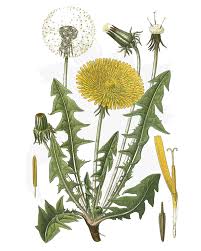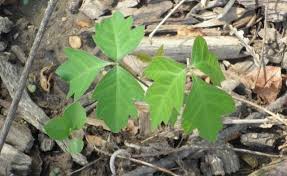If you own a fescue lawn in the transition zone, you are probably familiar with the challenge of keeping broadleaf weeds at bay. Not only do they detract from the beauty of your lawn, but they can also compete with your grass for nutrients, water, and sunlight. Here, we’ll discuss some of the most common broadleaf weeds you’ll encounter and how to remove them. For more information on the herbicides in this article read, “Best Weed Killer for Lawns.” For a more comprehensive overview of lawn care check out, “How to Prevent Weeds in Your Lawn.”
Henbit
Life Cycle
Henbit is a Winter annual broadleaf weed that germinates mostly in the Fall with some coming up in the early Spring. You’ll see their purple flowers popping up around March 15th in Southwest Missouri as they prepare to spread seed. Henbit dies in the heat of the Summer in May and June.
Identification
A weed with a square stem, small pink or purple flowers, and scalloped leaves.
Methods of Control
Henbit can be prevented with preemergent weed control or treated after emergence with 2,4-D herbicide.


Clover
Life Cycle
Clover is a perennial broadleaf weed that can thrive in low-nitrogen soils. It has a shallow root system and can spread quickly through its stems above ground, called stolons. Clover can grow throughout the year in mild climates and can produce flowers and seeds within weeks of germination.
Identification
A weed with three heart-shaped leaves and small white or pink flowers.
Methods of Control
Clover can be prevented with a prodiamine based preemergent, or treated after emergence with 2,4-D. Clover can also be prevented with regular nitrogen fertilization.


Dandelion
Life Cycle
Dandelions are annual broadleaf weeds found in the transition zone. They have a taproot that can grow up to several feet deep, making them difficult to pull out by hand. Dandelions produce yellow flowers in the spring and early summer, which then turn into white seed heads that can spread rapidly in the wind. They are easily confused with a weed known as shepherd’s purse because they have similar leaf patterns. Shepherd’s purse does not produce the yellow flowers, however. Control methods for both plants are the same.
Identification
A weed with a long taproot, serrated leaves, and yellow flowers. Depending on the season it may have its seed “clock,” a white, puffy ball of seeds that scatter in the wind.
Methods of Control
Dandelions aren’t prevented by prodiamine, but they do die when sprayed with 2,4-D. The best way to prevent them is to have thick, healthy turf so they do not have space to propagate.



Plantain
Life Cycle
Plantain is a common broadleaf weed that is often found in lawns in the transition zone. It has a robust, fibrous root system that enables it to withstand drought and other environmental stresses. Plantain typically germinates in the Spring and Summer, with a second round of germination in the Fall. Its leaves form a basal rosette that grows close to the ground, making it difficult to mow. As the plant matures, it sends up seed heads on stems that can reach up to 12 inches in height. These seed heads contain dozens of small, black seeds that can spread rapidly throughout the lawn.
Identification
A weed with broad leaves that form a rosette, sometimes with small, inconspicuous flowers. The two most common variations of plantain are broad-leafed and long-leafed plantain. Both types are pictured below.
Methods of Control
Prodiamine is not listed as an effective control for plantain, however thick turf is an effective preventative measure. 2,4-D with treat plantain after emergence.



Poison Ivy
Life Cycle
Ivys are perineal woody vines that can be difficult to kill. Poison Ivy buds will sprout in the Spring and begin leafing out and vining in May. It will flower in the summer and produce seeds in the late Summer or Fall. Its leaves fall off for Winter but the same plant leafs again the following May. Poison Ivy will also spread underground through rhizomes.
Identification
Poison Ivy is a climbing vine that will generally have 3 leaves on a stem. The middle leaf will have a longer stem than the others. The leaves may have smooth or serrated edges and the stems will have small roots growing all throughout. If in the fruiting season, Poison Ivy will have clusters of hard white fruits.
Methods of Control
Triclopyr is a herbicide effective for ivy. Make sure to spray it while the plant is actively growing for the best results. If you will be physically handling Poison Ivy, cover yourself with long sleeves and gloves to avoid irritation. Never burn Poison Ivy as the irritant compound of the plant can be released into the air and cause severe respiratory problems.



Wild Violets
Life Cycle
Wild Violets germinate in cool, moist growing conditions. Their leaves and stems emerge in the Spring and produce flowers in April and May and then the flowers are then replaced by seed pods. They are perennial plants that return year after year.
Identification
Wild Violets are a type of groundcover weed that can be difficult to control in lawns. They have small, heart-shaped leaves and produce small purple or white flowers. African violets spread through their stems and can form dense mats that crowd out grass.
Methods of Control
Wild Violets are best treated with triclopyr. They can be very tough to kill and will likely require multiple sprays. Treat these plants in the Spring and Fall when they are actively growing. They do not metabolize herbicides very well in the hot Summer months.



Conclusion
Broadleaf weeds can be a persistent problem in fescue lawns in the transition zone, but they can be effectively removed with the right herbicides and application techniques. By understanding the lifecycles and characteristics of common broadleaf weeds and applying the appropriate herbicides at the right time, you can keep your lawn looking lush and healthy. Remember to always follow label instructions and consult with a professional if you are unsure of how to proceed.
Want a professional to handle your broadleaf weed problem? Click here to get an estimate from Midwest Turf Pros.




